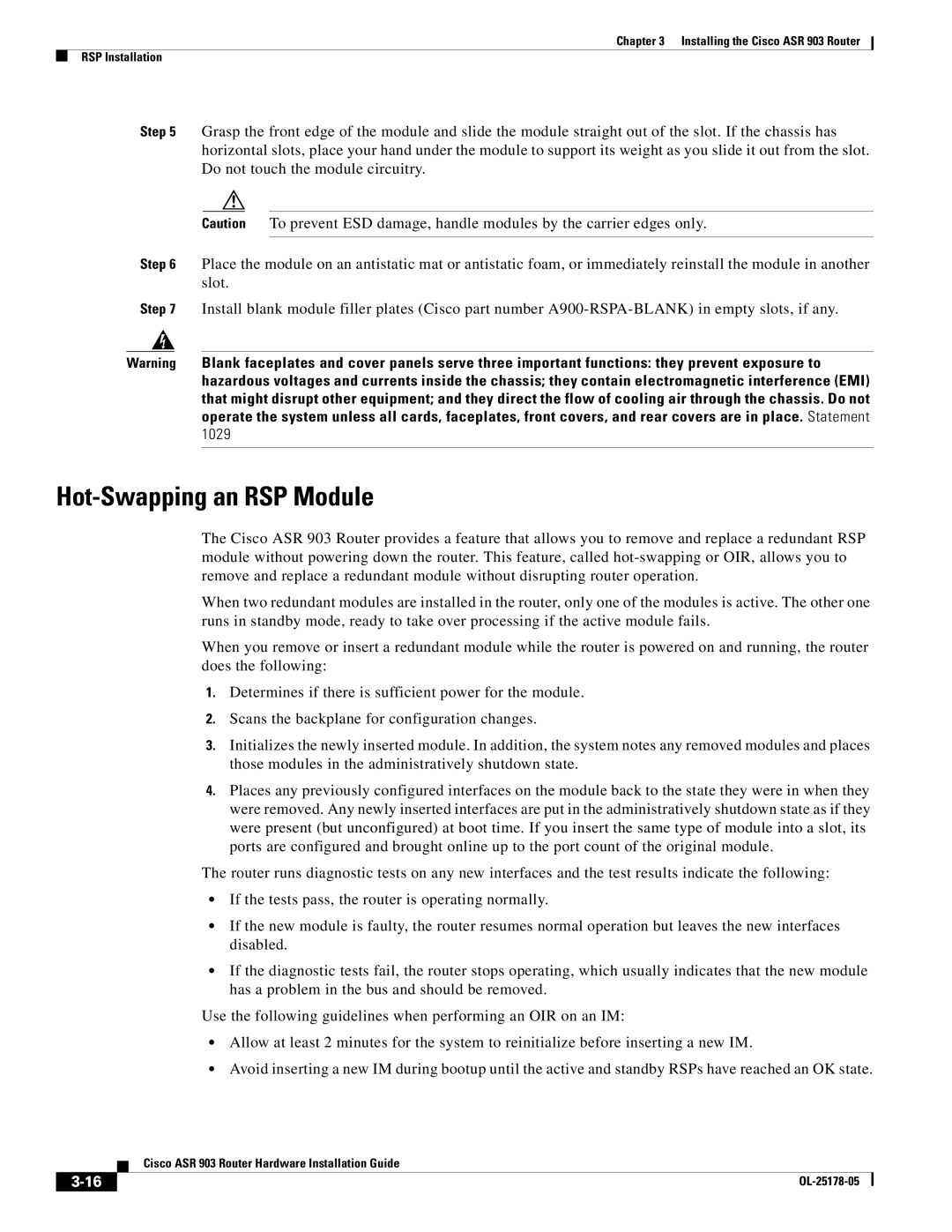
Chapter 3 Installing the Cisco ASR 903 Router
RSP Installation
Step 5 Grasp the front edge of the module and slide the module straight out of the slot. If the chassis has horizontal slots, place your hand under the module to support its weight as you slide it out from the slot. Do not touch the module circuitry.
Caution To prevent ESD damage, handle modules by the carrier edges only.
Step 6 Place the module on an antistatic mat or antistatic foam, or immediately reinstall the module in another slot.
Step 7 Install blank module filler plates (Cisco part number
Warning Blank faceplates and cover panels serve three important functions: they prevent exposure to hazardous voltages and currents inside the chassis; they contain electromagnetic interference (EMI) that might disrupt other equipment; and they direct the flow of cooling air through the chassis. Do not operate the system unless all cards, faceplates, front covers, and rear covers are in place. Statement 1029
Hot-Swapping an RSP Module
The Cisco ASR 903 Router provides a feature that allows you to remove and replace a redundant RSP module without powering down the router. This feature, called
When two redundant modules are installed in the router, only one of the modules is active. The other one runs in standby mode, ready to take over processing if the active module fails.
When you remove or insert a redundant module while the router is powered on and running, the router does the following:
1.Determines if there is sufficient power for the module.
2.Scans the backplane for configuration changes.
3.Initializes the newly inserted module. In addition, the system notes any removed modules and places those modules in the administratively shutdown state.
4.Places any previously configured interfaces on the module back to the state they were in when they were removed. Any newly inserted interfaces are put in the administratively shutdown state as if they were present (but unconfigured) at boot time. If you insert the same type of module into a slot, its ports are configured and brought online up to the port count of the original module.
The router runs diagnostic tests on any new interfaces and the test results indicate the following:
•If the tests pass, the router is operating normally.
•If the new module is faulty, the router resumes normal operation but leaves the new interfaces disabled.
•If the diagnostic tests fail, the router stops operating, which usually indicates that the new module has a problem in the bus and should be removed.
Use the following guidelines when performing an OIR on an IM:
•Allow at least 2 minutes for the system to reinitialize before inserting a new IM.
•Avoid inserting a new IM during bootup until the active and standby RSPs have reached an OK state.
| Cisco ASR 903 Router Hardware Installation Guide |
|
